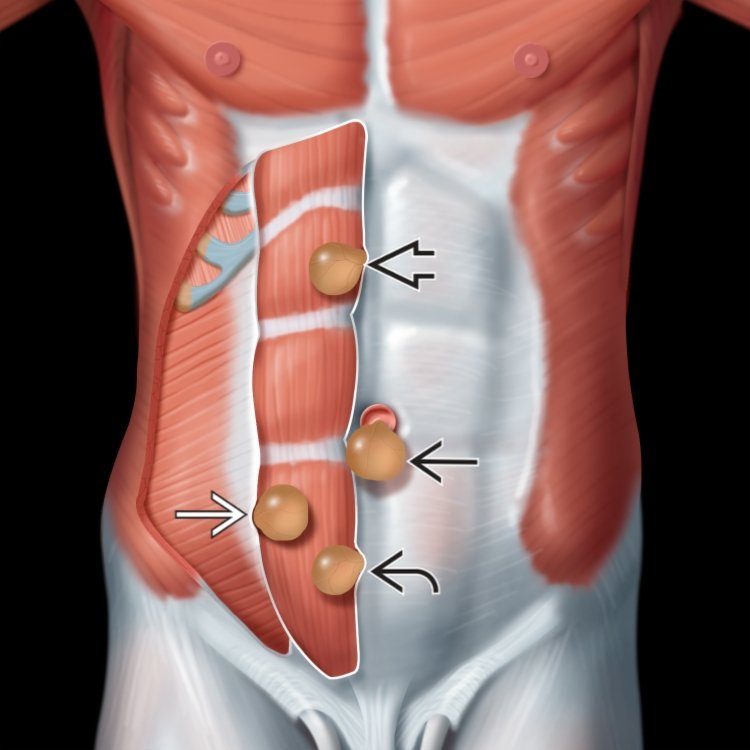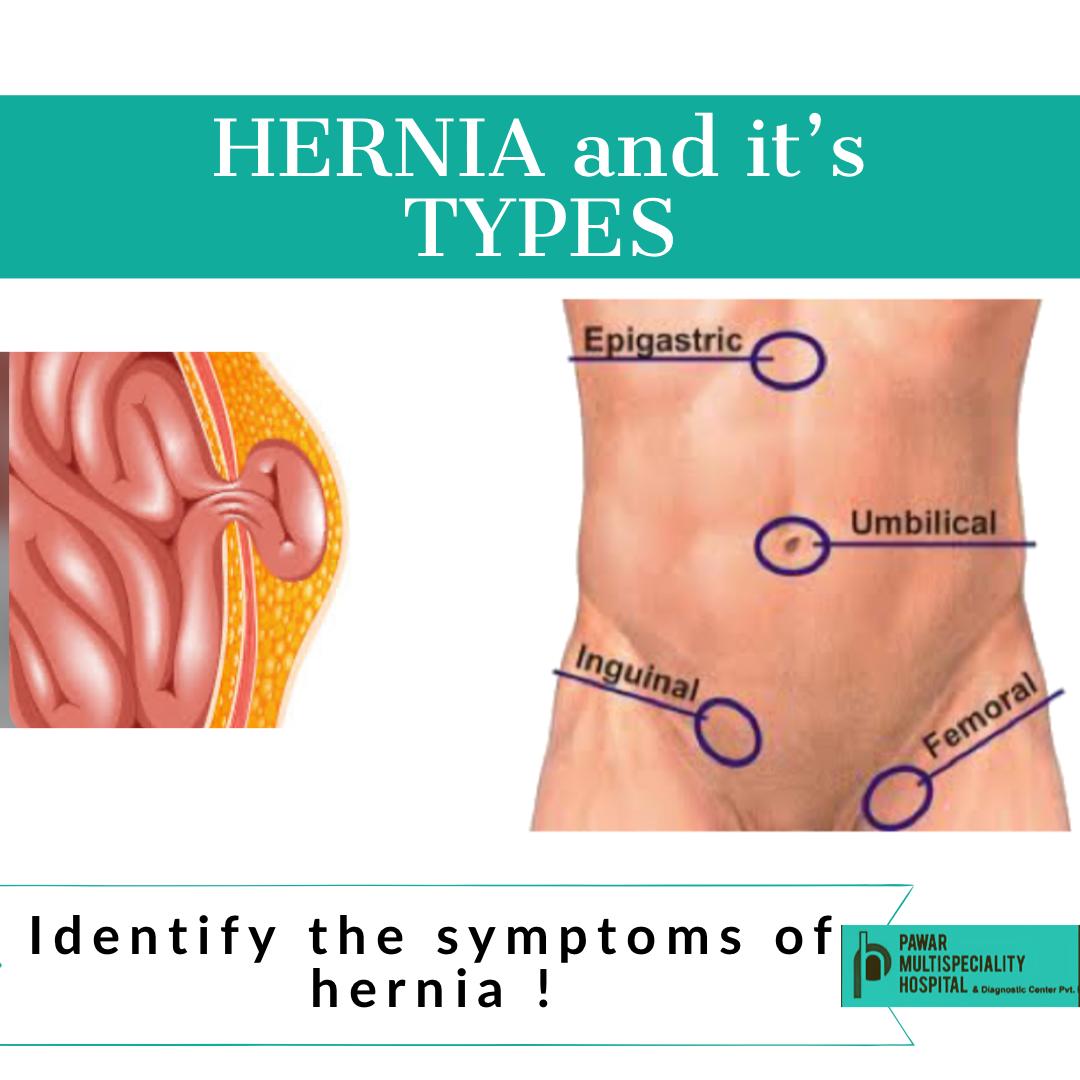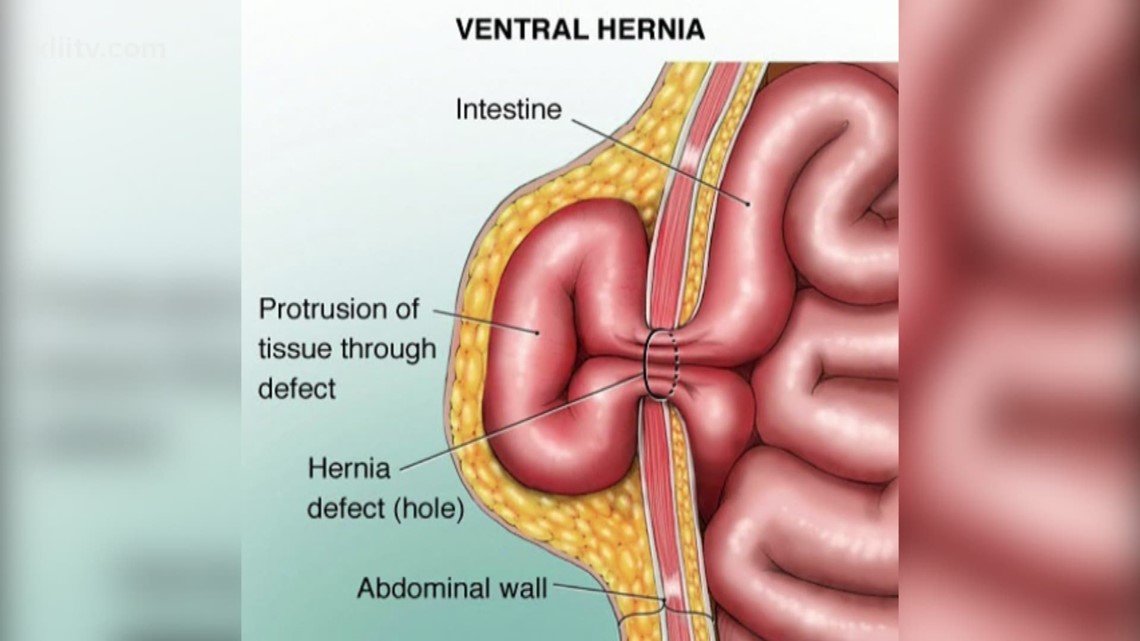What Do Doctors Do
If you notice a bulge or swelling in your groin, abdomen, scrotum, or thigh, talk to your doctor. Sometimes a hernia may also cause sharp or dull pain, which can get worse upon standing.
With most types of hernias, the doctor can see and feel the bulge and diagnose someone with a hernia.
Over time, a hernia may become larger and more painful. In some cases of hiatal hernia, a piece of the intestine could become trapped . In a true surgical emergency, the blood supply could be cut off to the incarcerated intestine . This situation is painful and dangerous because it can cause infection and may cause the strangulated tissue to die.
If you’ve had a hernia operation and you notice redness or discomfort around your incision , be sure to let your doctor know. It could be a sign of infection that needs further treatment.
Causes And Risk Factors Of Hernia
Inguinal and femoral hernias can be caused by weakened muscles, aging, or repeated strain on the abdominal and groin areas. This strain may come from physical activity, heavy lifting, obesity, frequent coughing, or constipation .
In men, inguinal hernias can be caused by problems in the inguinal canals, from which the testicles descend before or after birth. When muscles in these canals dont close the way they are supposed to, the area can become weakened and lead to a hernia.
Umbilical hernias can be caused during pregnancy, when the umbilical cord passes through an opening in an infants abdominal muscles. The opening normally closes just after a baby is born. If the muscles don’t fully join together in the middle of the abdominal wall, an umbilical hernia may occur at birth or later in life. In adults, too much abdominal pressure can lead to umbilical hernias, from causes including obesity, multiple pregnancies, and previous abdominal surgery.
Doctors dont exactly know what causes hiatal hernias, but a weakened diaphragm due to aging or pressure on the abdomen may play a role.
Minimally Invasive Hernia Repair
Minimally invasive surgery can effectively diminish the size of a hernia, as well as reduce the opening in the diaphragm, thereby preventing strangulation. During this procedure, surgeons will insert a tiny video camera into your abdomen. Theyll be able to view images projected onto a monitor, which will allow them to complete the procedure with greater control and finesse. The purpose of this surgery is to restore the stomach into your abdomen and close down the hole in the diaphragm. Minimally invasive surgery is associated with a quicker recovery and faster return to function than traditional open repair. Your doctor will determine if you are a candidate for this approach.
Dont Miss: Bloated After Eating Salad
Also Check: How To Ease Stomach Pain
Key Points About Hernias In Children
-
A hernia is when a part of the intestine pushes through a weak spot in the belly muscles.
-
A hernia creates a soft lump or bulge under the skin.
-
A hernia that happens in the belly button area is called an umbilical hernia.
-
A hernia that happens in the groin area is called an inguinal hernia.
-
Surgery is needed to treat an inguinal hernia. An umbilical hernia my close on its own.
-
In some cases, hernias can get stuck. Blood supply may be blocked to part of the intestine. This is a medical emergency.
What Are The Symptoms Of A Hernia And How Is It Diagnosed

Symptoms of a hernia can range from slightly uncomfortable to extremely painful.
A hernia happens when an area of an organ or tissue pushes through a weakened layer of muscle, usually in your groin or abdomen.
A hernia can be external, pushing through muscle toward the outside of your body and visible under your skin, or internal, when it pushes through a different muscle layer deep under the skin.
There are several types of hernias, each of which is associated with its own set of symptoms.
Your doctor will diagnose a hernia based on your symptoms and health history, a physical exam, and possibly blood tests or imaging scans of the affected area.
Don’t Miss: What Is The Difference Between Food Poisoning And Stomach Virus
How Is A Hiatal Hernia Diagnosed
Several tests can be done to help diagnose a hiatal hernia. These include a barium swallow test, an endoscopy procedure, esophageal manometric studies, a pH test and gastric emptying studies.
- A barium swallow involves drinking a special liquid, then taking X-rays to help see problems in the esophagus and the stomach . It also shows how big the hiatal hernia is and if there is twisting of the stomach as a result of the hernia.
- An endoscopy is a procedure in which the inside of the upper digestive system is viewed with an endoscope .
- Anesophageal manometry measures the strength and muscle coordination of your esophagus when you swallow.
- A pH test measures the acid levels in the esophagus and helps determine which symptoms are related to acid in the esophagus.
- Gastric emptying studies examine how fast food leaves the stomach. Results from this test are especially important in patients who have nausea and vomiting. There could be other causes of the nausea and vomiting besides a hiatal hernia.
Why Is My Stomach Bigger After Hernia Surgery
If youre wondering Why Is My Stomach Bigger After Hernia Surgery? Its because You had a hernia repaired. Well! The bodys natural response to surgery is the most prevalent cause of edema.
Hernias frequently appear as a bulge or swelling beneath the skin. Hernias come in several different forms and they rarely heal on their own. They tend to grow in size. They can cause life-threatening complications in rare cases. That is why doctors frequently recommend surgery. Even if the hernia does not cause complications on its own, hernia repair surgery may cause complications. However, surgical complications are more likely if a hernia requires immediate repair. Swelling after inguinal or umbilical hernia surgery is wholly natural and does not indicate a concern.
You May Like: How To Help Child With Anxiety Stomach Aches
Can Hernias Be Prevented
There is not much that can be done to prevent a hernia. When the abdominal wall becomes damaged or develops weak spots, a hernia commonly occurs. However, if you wish to lower the chances of developing hernia by reducing strain on your abdominal wall, there are a few lifestyle changes and techniques that can be helpful.
- Exercise regularly
Will An Umbilical Hernia Come Back
Umbilical hernia repair surgery has high success rates. In rare cases, it may recur . Your childs provider will discuss treatment options if that happens.
A note from Cleveland Clinic
Umbilical hernia surgery for children is a short, safe procedure that has good results. After umbilical hernia repair, your child will be back to their regular activities within a few days. An umbilical hernia is when part of the intestine pushes through an opening in the abdominal wall. In about 95% of cases, umbilical hernias go away on their own by the time a child is three or four. But sometimes the hernia doesnt go away or the hernia may be larger and more complex. In these situations, your provider will recommend umbilical hernia surgery. During the procedure, the surgeon pushes the intestine back inside the abdomen. If you notice a bulge around your childs belly button area, talk to your provider.
Last reviewed by a Cleveland Clinic medical professional on 01/13/2021.
References
Read Also: What To Do When Your Stomach Is Upset
What Causes A Hiatal Hernia
The most common cause of a hiatal hernia is an increase in pressure in the abdominal cavity. Your abdominal cavity is the space in the middle of your body that holds several organs, including the:
- Lower part of the esophagus and stomach.
- Small intestine, colon and rectum.
- Liver.
This pressure can build up from things like:
- Coughing.
- Straining during a bowel movement.
- Heavy lifting.
- Physical strain.
There are also other reasons a hiatal hernia could develop. You may experience a hiatal hernia during pregnancy, if you are obese, or if theres extra fluid in your abdomen.
Increased pressure in the abdomen causes part of the stomach to push through the diaphragm and into the chest cavity.
What Causes Umbilical Hernias
An umbilical hernia occurs when the opening in the abdominal muscle that allows the umbilical cord to pass through fails to close completely. Umbilical hernias are most common in babies, but they can also occur in adults.
African-American babies, premature babies, and babies born at a low birth weight are at an even higher risk of developing an umbilical hernia. There is no difference in occurrence between boys and girls, according to Cincinnati Childrens Hospital Center.
An umbilical hernia in adults usually occurs when too much pressure is put on a weak section of the abdominal muscles. Potential causes include:
- having a persistent, heavy cough
Don’t Miss: What Can I Take For Stomach Inflammation
Can Umbilical Hernias Be Repaired
In young children, umbilical hernias often heal without treatment. In adults, surgery is usually suggested to make sure that no complications develop. Before choosing surgery, doctors will normally wait until the hernia:
- becomes painful
- is bigger than one-half inch in diameter
- doesnt shrink within one or two years
- doesnt go away by the time a child is 3 or 4 years old
- becomes trapped or blocks the intestines
What Causes Inguinal Hernias

A weak area in the muscles and connective tissue of the lower abdominal wall at the inguinal canal allows an inguinal hernia to develop. A hernia can form in different ways, causing two types of hernias.
- Indirect inguinal hernias are related to a defect in the lower abdominal wall that is present at birth. In a developing fetus, the inguinal canals have openings inside the abdomen that typically close before birth. In some cases, one or both openings remain open. Contents of the abdomen may bulge through this opening, causing a hernia. While the defect is present at birth, an indirect inguinal hernia may not occur until many years later.
- Direct inguinal hernias are related to a weak area in the inguinal canal wall that develops later in life. Contents of the abdomen may bulge out through this weak area, causing a hernia. This type of hernia primarily occurs in men. Women and children rarely develop this type of hernia.
Researchers are studying other factors that might play a role in causing inguinal hernias. These factors include
- connective tissue that is weaker than normal or connective tissue disorders
- genes that increase the risk of inguinal hernias
- health conditions that cause increased pressure inside the abdomen, such as chronic cough or chronic constipation
- regular or repeated activities that cause increased pressure inside the abdomen, such as heavy lifting and standing or walking for many hours each day at work
Recommended Reading: How To Flatten Upper Stomach
What Tests Do Doctors Use To Diagnose Inguinal Hernias
If the diagnosis is not clear after a physical exam, your doctor may order imaging tests to check for an inguinal hernia. Doctors may also use imaging tests to check for complications.
Imaging tests may include
- ultrasound, which uses sound waves to create an image of your organs
- computed tomography , which uses a combination of x-rays and computer technology to create images
- magnetic resonance imaging , which takes pictures of your bodys internal organs and soft tissues without using x-rays
Complications Of A Hernia
Occasionally, tissue from inside the abdomen gets trapped in the hernia. Usually, the tissue can be gently pushed back into the abdomen. But if it cannot, it is a medical emergency. This is called a strangulated hernia. If the hernia is trapped and you or your child are in serious pain, seek emergency medical attention.
A hiatus hernia can lead to bad reflux. In the long term, this can damage the oesophagus and make it difficult to swallow.
You May Like: How To Get Rid Of Stomach Skin
Where Is Hernia Pain Located
A bulge in the area on either side of your pubic bone, which becomes more obvious when youre upright, especially if you cough or strain. A burning or aching sensation at the bulge. Pain or discomfort in your groin, especially when bending over, coughing or lifting. A heavy or dragging sensation in your groin.
What Treatment Options Are Available
Ventral hernias require surgical correction. If left untreated, they continue to grow slowly until they are able to cause serious complications.
Untreated hernias can grow into enlarged ventral hernias that become progressively more difficult to fix. Swelling can lead to trapping of hernia contents, a process called incarceration. This in turn can lead to reduced or no blood supply to the tissues involved, which is referred to as strangulation.
Options for surgical treatment include:
- Mesh placement surgery: A surgeon pushes tissue back into place and then sews in a mesh, which serves as a reinforcing patch, to keep it in place. This is considered safe and reliable, and mesh placement has been shown to reduce risk of hernia recurrence.
- Laparoscopic repair: A surgeon makes multiple small openings and fixes your hernia using guidance with a small camera inside your body to direct the surgery. A mesh may or may not be used.
- Open surgery : A surgeon makes an incision adjacent to your hernia, pushes the tissues back into place, and then sews the area shut. A mesh may or may not be used.
Benefits of laparoscopic removal include the following:
- much smaller cut site, which lowers chance of infection
- reduced postoperative pain
- reduced hospital stay generally able to leave day of or day after procedure
- absence of a large scar
- faster overall recovery time
These are a few concerns about open surgery:
- longer stay in the hospital after surgery
- greater amount of pain
You May Like: What To Do For Cat With Upset Stomach
What Are The Complications Of A Hernia
In rare cases, inguinal hernia repair can damage structures involved in the function of a man’s testicles.
Another risk of hernia surgery is nerve damage, which can lead to numbness in the groin area.
If a part of your bowel was trapped or strangulated before surgery, it may lead to a bowel perforation or dead bowel.
- Strangulation: Pressure placed on the hernial contents may compromise the blood supply to a section of an organ or tissue, leading to ischemia, cell death, and even gangrene. A strangulated hernia is life-threatening and requires immediate surgery.
- Obstruction: When part of the gut herniates, the bowel contents may no longer be able to pass through the herniated area, leading to cramps, the absence of defecation and vomiting.
Q: Who Is At Higher Risk For A Ventral Hernia
A: Anyone can develop a ventral hernia, but those whove had abdominal surgery have a higher risk. If you have an incision that disrupts the abdominal wall, the scar will never be as strong as the original tissue. This makes it more likely that youll develop a hernia, known as an incisional hernia, along the incision area. This occurs in up to 30% of patients who have open abdominal surgery.
Pregnancy is a risk factor that makes women more susceptible to developing another type of ventral hernia near the belly button, called an umbilical hernia. The umbilicus is the thinnest part of the abdominal wall. Its a very common site to develop a hernia, whether youre a man or a woman.
Read Also: What Does It Mean When Your Stomach Feels Bloated
Hernia In Women And Children
The causes in women and men are similar. Any of the above causes can lead to hernia in both the sexes. Apart from this, women are also at a risk of developing it during pregnancy. This can happen when there is a weak spot around the pubic bone where the connective tissues of the uterus attach to other tissues.
Children may also suffer from it mostly due to weak muscles in the abdominal wall. Any part of the intestine or an abdominal tissue falling into the inguinal canal can be a cause in children. Premature babies and children with a family background of hernia cases are more likely to develop it at a young age or at the time of birth. A surgery is usually performed in this case.
Hernia Signs And Symptoms In Children

Hernias are common in kids, especially babies. They can happen when part of their abdominal wall is weak at birth. If your child has one, youâll usually notice a bulge in their groin area or around their bellybutton. Your baby may also cry a lot and refuse to eat. Hernias often bulge when your child cries, coughs, or strains to poop. You may also notice that their belly is tender to the touch.
Also Check: What Can I Give My Toddler For Upset Stomach
Is It Possible To Prevent An Abdominal Hernia
While congenital hernias cannot be prevented, the risk of developing a hernia that occurs as life goes on can be minimized. The goal is to avoid an increase in pressure within the abdomen that could stress the weak areas in the abdominal wall.
- Maintain a healthy weight.
- Eat a healthy diet and exercise routinely to minimize the risk of constipation and straining to have a bowel movement.
- Use proper lifting techniques especially when trying to lift heavy objects. This is important to remember at work, home, and in sports.
- Stop smoking to decrease recurrent coughing.
- If a hernia develops, seek medical care to have it evaluated and potentially treated before it gets too large or becomes incarcerated.